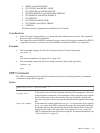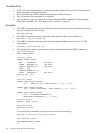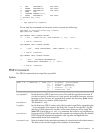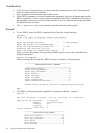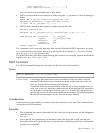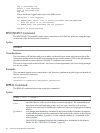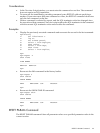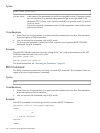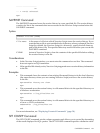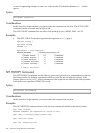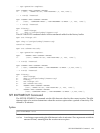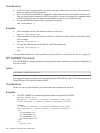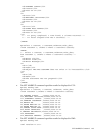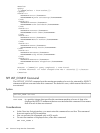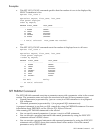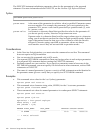
--------------------
62
--- 1 row(s) selected.
SQL>
SAVEHIST Command
The SAVEHIST command saves the session history in a user-specified file. The session history
consists of a list of the commands that were executed in the Neoview Script session before the
SAVEHIST command.
Syntax
SAVEHIST file-name [CLEAR]
file-name
is the name of a file into which Neoview Script stores the session history. If you
want the history file to exist outside the local directory where you launch Neoview
Script (by default, the Neoview Script bin directory), specify the full directory
path of the history file. The specified directory must exist before you execute the
SAVEHIST command.
CLEAR instructs Neoview Script to clear the contents of the specified file before adding
the session history to the file.
Considerations
• In the Neoview Script interface, you must enter the command on one line. The command
does not require an SQL terminator.
• If the specified file already exists, Neoview Script appends newer session-history information
to the file.
Examples
• This command clears the contents of an existing file named history.txt in the local directory
(the same directory where you are running Neoview Script) and saves the session history
in the file:
SQL>savehist history.txt clear
SQL>
• This command saves the session history in a file named hist.txt in the specified directory on
a Windows workstation:
SQL>savehist c:\log_files\hist.txt
SQL>
• This command saves the session history in a file named hist.txt in the specified directory on
a Linux or UNIX workstation:
CS#savehist ./log_files/hist.txt
CS#
For more information, see “Displaying Executed Commands” (page 58).
SET COLSEP Command
The SET COLSEP command sets the column separator and allows you to control the formatting
of the result displayed for SQL queries. The SET COLSEP command specifies a delimiter value
SAVEHIST Command 101



